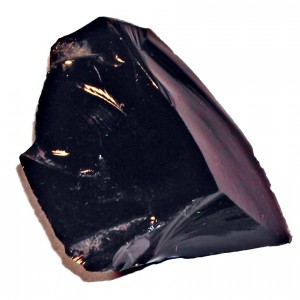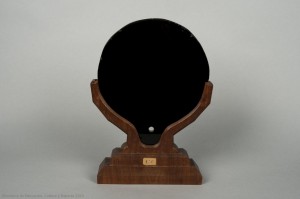Obsidian Microcore and Mirror – Guest Lecture: Dora Moutsiou
Dora Moutisou talks in this lecture about Obsidian.
This lecture was recorded by the University of Southampton in the Digital Humanities Distributed Laboratory. If you would like to see Dora’s slides in more detail, or use the interactive tools for this presentation, visit the recording on the CourseCast website: http://coursecast.soton.ac.uk/
Obsidian Micro-core

Obsidian’s high quality for the manufacture of stone implements was recognised very early on by prehistoric tool-makers. Although the use of obsidian is more pronounced in late prehistoric times, particularly in the Neolithic, it is much earlier that the first archaeological evidence for the procurement of obsidian is recorded. Obsidian handaxes are present in Acheulean sites in Africa, for example Kariandusi, but more commonly obsidian Palaeolithic assemblages include cores, retouched tools, flakes and fragments. Obsidian’s excellent knapping qualities resulted in it being transported several kilometres on the Palaeolithic landscape throughout the world, occasionally at great distances too.
Reading
Cann, J. R. & Renfrew, C. 1964, The characterization of obsidian and its application to the Mediterranean region, Proceedings of the Prehistoric Society 30: 111-133
Gowlett, J. A. J. & Crompton, R. H. 1994, Kariandusi: Acheulean morphology and the question of allometry, The African Archaeological Review 12: 3-42
Obsidian Mirror

The aesthetic value that obsidian enjoyed in the past reached its apotheosis in the Mesoamerican cultures whose economic and symbolic life it underwrote for ~3000 years. The symbolic importance and authority obsidian attained throughout that period is exemplified by the Aztecs’ respect towards their patron god Tezcatlipoca, Lord of the Smoking Mirror. Tezcatlipoca’ s eponymous possession, the obsidian mirror, was a metaphor for rulership and power. Obsidian’s unequalled utility generated an enduring Mesoamerican aesthetic, unique in its capacity to create social relationships and stimulate symbolic connections.
Reading
Heyden, D. 1988, Black Magic: obsidian in symbolism and metaphor, in J. K. Josser and& K. Dakin (eds) Smoke and mist: Mesoamerican studies in memory of Thelma D. Sullivan. Oxford, British Archaeological Reports International Series 402: 217-236.
Saunders, N.J. 2001, A dark light: reflections on obsidian in Mesoamerica, World Archaeology 33: 220-236.

Leave a Reply